A woodwind reed is the heart of any instrument. When musicians blow air from their lungs into the clarinet, oboe, or saxophone, the reed’s vibrations create the instrument’s sound waves, which the musician and instrument then shape. Your ability to choose the right reed for your instrument can make your playing sound that much better. If you are a highly versatile musician, you may even change your reeds depending on the type of music you play.
High amount of durability for cane products.
Robust tone brings out the harmonics of the instrument.
Strength is graded in thirds instead of halves with more specific thickness.
Musicians often treat reeds as interchangeable, not giving much thought to which ones they select. So keep reading to learn about the small but mighty woodwind reed. This list features woodwind reeds that sound great, but also hold up under frequent and long-term playing. Of course, they still need to be affordable. After researching tenor saxophones, B flat (Bb) clarinets, and oboe reeds here are the best reeds you can use for each of these instruments.
Developing this article started with researching the latest saxophone, clarinet, and oboe reeds on the market right now. For each instrument, 10 to 15 reeds were examined for reed flexibility, sound, durability, and capacity for holding up under different climates and intense play.
How Does a Woodwind Reed Work?
The woodwind reed is a small, thin component that vibrates when air passes by, thus generating sound waves. Although not all woodwind instruments use reeds, many do. Single reeds and double reeds work with similar processes. Here are the most common ones:
Air Flow
Reeds control the flow of air into the instruments that use them and their vibrations. Single reeds vibrate directly next to a mouthpiece, while double reeds vibrate against one another. Both types of reeds are made from the giant cane plant, or what people call the Arundo donax, although you can also find synthetic reeds.
Dr. Joe Wolfe, a University of New South Wales professor of acoustics, wrote an article that offers a highly detailed description of how blowing on a woodwind instrument creates music. When you blow into a reed instrument, you change the air pressure, which lifts single reeds and parts double reeds.
Vibration
In both cases, you create vibrations in the woodwind reed as you play. The reed’s vibrations permit you to blow bursts of air into the instrument every time the single reed lifts up from the mouthpiece, or every time the double reed parts. The vibrating air bursts move through the instrument, and the vibrations are what you hear as sound.
While the vibrations travel through the length of the instrument, they also experience changes in their frequency. This is because the vibrations reflect off the end of the instrument, as well. Repeated reflections from both ends of the instrument cause the air bursts to emerge with vibrations that contain both the main note and harmonic tones they create.
Harmonics
Harmonic tones are sounds vibrating at frequencies that are whole-number multiples of the note you are playing. For example, they can have a frequency three times the frequency of the main note. The harmonics have a higher-pitch compared with the main note. And because you hear harmonics in the same key as the main note, they sound pleasant when you experience them together.
The presence of overtones means when you blow, you don’t just hear a single note. Instead, you hear any given note plus one or more harmonics. This combination of main notes and their harmonics give the woodwind reed a full, robust sound.
Breaking in Your Woodwind Reed
You should know how to break in or work on single reeds for saxophones and clarinets. This means to put some initial wear on them to make them play better. This idea might seem counterintuitive at first, but breaking in a woodwind reed makes them flexible and easier to play. New reeds will tend to snap or crack if you don’t break them in first.
In fact, new reeds lack the flexibility to handle the ligature tension and rapid vibrations on the reed when playing music. Musicians also balance the reeds by sanding or flattening single reeds, so that they fit the mouthpiece and ligature. Double reed instrument players cut the reeds to ensure they work properly.
People moisten, sand, and file reeds, among other methods, just to break them in first. This Youtube video by Earspasm Music gives an in-depth look at breaking in reeds and may ensure you never snap a new woodwind reed again.
Attributes that Differentiate Reeds
Reeds have numerous distinguishing characteristics. Single and double reeds have visible distinctions in size and shape. They also function differently when you blow on the instrument. Read on to learn some of the key differences in reeds you should know.
Type of Instrument
Buy a woodwind reed that was designed by the manufacturer for the instrument you play. For example, you can’t shove a clarinet reed into an oboe. But what is sometimes less obvious is that single reeds and double reeds generally aren’t interchangeable between instruments.
You usually can’t exchange the reeds for various clarinets and saxes either. So, if you are a baritone sax player, don’t use tenor sax reeds just because you found a great deal on them. Your instrument will sound its best when you have a reed with the right dimensions and properties for your play style.
Size of the Reeds
Double reeds can vary in length. Some manufacturers sell reeds that are deliberately long, so musicians can trim them to the desired length. However, the length can affect the flexibility, ease of use, and tone. Single reeds have different sizes, so they fit various kinds of saxophones and clarinets. They also have to fit various mouthpiece sizes within a single category of instruments.
The right single woodwind reed should cover the mouthpiece closely without leaving any cracks where air can pass through. And it shouldn’t stick out over the edge of the mouthpiece. You may file or sand down a single woodwind reed to ensure it doesn’t stick out. You’ll want to make sure the edge has the precise shape you need.
The Strength of the Reeds
You can buy several strengths of reed for each type of instrument. The strength of a woodwind reed relates to its thickness. Thicker reeds are more difficult to snap or crack, but they are also more rigid. Depending on your playing style, a thicker, stronger reed will change your instrument’s tone.
However, you may find rigid reeds are difficult to play with, especially for beginners. You may need to break them in extensively before you use them. You may wish to try higher-strength reeds in the winter or for rainy, humid climates. This will reduce weather-related changes in the woodwind reed.
Strength Rating
Reed manufacturers inform buyers about each reed’s specific strength, which pertains to their thickness. And they sometimes describe reeds as soft, medium-soft, medium, medium-strong or strong. They often express the woodwind reed strength as a number between 1 and 5 to give you an idea of their thickness. The softest reeds are a 1 and the strongest reeds are a 5.
Keep in mind, this rating system is not standardized, so manufacturers sometimes rate the same thickness of reeds using different numbers. If you usually use a woodwind reed with a strength of 3 from Rico, a D’Addario reed with a rating of 3 may not be the same thickness. So you might need a reed they rate at 2.5 or 3.5 from a different manufacturer to get an equivalent sound.
Natural Vs. Synthetic Reeds
Cane reeds remain the most common type of woodwind reed for both single-and double-reed instruments. But manufacturers have also developed synthetic reeds. Synthetic reeds can be particularly helpful for new musicians, especially if they play a single-reed instrument. They don’t need breaking in because they are already flexible. And you don’t have to worry about snapping them nearly as much.
The synthetic woodwind reed is weather-resistant. However, natural reeds tend to sound better and have greater flexibility. But there is the risk of snapping them, so you need to break them in first. They also have a shorter lifespan. And natural reeds lose their durability in humid or cold weather, making breakage occur more easily. But you can use higher-strength reeds to help avoid this outcome.
Some manufacturers have combined the best features of both synthetic and cane reeds with plastic-coated cane reeds. They are more flexible and weather-resistant, and hold up to extended, intense play.
The Top Picks: Tenor Sax
Woodwind instruments require radically different reeds from one another. So, this list focuses on reeds from the most common woodwind instruments. And they are the tenor sax, Bb clarinet and oboe.
SR223 Tenor Sax Traditional Reeds

Credit: Amazon.com
The tenor saxophone reeds on the top of this list were the SR223 Tenor Sax Traditional Reeds by Vandoren. The strength 3 reeds produced a clear, bright tone, while the strength 5 reed was clear yet mellow. Different reeds produced a varying degree of sounds and remained clear. You may need to experiment to see which tone you like best. Some blues and jazz musicians who focus on richer, lower sounds still preferred the softer SR223 reeds for the control they offer.
High amount of durability for cane products.
These reeds provide a high amount of durability for a cane product. Some musicians reported that the medium to high strength woodwind reed holds up well in humidity for playing outdoors. One musician said they preferred the SR223 reeds for their marching band at high school because of their strength.
SR223 reeds will last you a long time with without developing chips. Music store employees said they recommended these reeds to tenor saxophone players with a couple years of experience. Saxophonists report these reeds may not be the best choice for beginners though, because chipping them is possible.
A couple of advanced players said SR223 reeds required a large amount of breaking in after purchase to avoid chipping. So their lifespan could depend on your play style. Vandoren reeds in the same series are also available for other saxophones, including the alto sax.
The Top Picks: Clarinet
Rico Bb Clarinet Reeds

Credit: Amazon.com
The Rico Bb Clarinet Reeds are a favorite type of woodwind reed for the Bb clarinet. Clarinetists who have played for a year or more should try them. All the strengths sound great. Rico reeds provide a tone that is robust and brings out the harmonics of the instrument. The quality of these Bb reeds Rico means you can always rely on them to deliver great sound during performances.
Robust tone brings out the harmonics of the instrument.
Some clarinet players said that they liked the Rico reeds for permitting a dynamic range even with stronger reeds. And the stronger reeds didn’t sacrifice bright sound for thickness. These reeds fit most mouthpieces well. This is a must if you want to get the right sound out of your clarinet. They are unfiled, so when you break in this woodwind reed, you can get the precise shape and dimensions you like.
If you are a beginner and don’t know how to break reeds in and file them down, you may have trouble with these. So they are not as useful for beginners. Rico makes similar reeds for other clarinets, such as the bass clarinet.
The Top Picks: Oboe
Martin Lesher Medium Oboe Reeds
The Martin Lesher Medium Oboe Reeds earned the most votes for the best double reeds you could get for this woodwind instrument. The sound was the winning factor with the Martin Lesher Reeds. These reeds allowed the oboe to sound smooth and melodic without spending a large amount of time shaping the double reed beforehand.
Strength is graded in thirds instead of halves with more specific thickness.
One oboe player reported that when they were learning to play the instrument, Martin Lesher reeds helped them get the correct sound from their oboe from the first time. This was without the thin sound or squeaking that occurred with other reeds. These reeds offer substantial strength. Some musicians have described the medium strength Martin Lesher woodwind reed as somewhat stiff.
They are also extremely reliable and preferable because of their stiffness. People who play in cold weather say stronger reeds are optimal, too. But the stiffness means if you don’t like the shape, you may have to pinch them to re-shape them before you play, and sometimes even while playing. And it’s not easy to reshape them.
The consensus among musicians and music store staff was that these reeds are harder to chip than many other reeds. Advanced players liked them for this reason, and suggested they make an excellent option for newcomers to the oboe. One musician did warn that a few oboe players, depending on the way they play, may still chip these reeds frequently. So, there is some compatibility to consider between play style and the woodwind reed that determines how well they work.
Runner Up: Tenor Sax
Rico Select Jazz Tenor Sax Reeds

Credit: Amazon.com
Skilled Jazz musicians may prefer the Rico Select Jazz Tenor Sax Reeds to the main pick for the best saxophone reeds. These reeds provide a more mellow tone. And unlike many tenor sax reeds, they grade their strengths in thirds instead of halves. Jazz saxophonists report the strengths of these reeds allows players to choose a thickness that works well for them.
Musicians can get filed or unfiled versions of the same reed based on preference. Having both filed and unfiled reeds could be helpful in performance situations. For example, if you unexpectedly chip a woodwind reed and don’t have another unfiled one already broken in, you could switch to a filed reed. That way, you don’t have to deal with a different thickness or dimensions to finish your performance.
Alexander S5T2 Tenor Saxophone Reeds
Alexander S5T2 Tenor Saxophone reeds were the next woodwind reeds on this list. The tone from them was full-bodied and a bit mellow, which is great for people who play the blues saxophone.
However, individuals in marching bands and jazz combos said the sound was flat and not bright enough for them. Although some musicians may not feel the sound of this woodwind reed works well with what they play, these work well.
Runner Up: Clarinet
Vandoren CR103 Bb Clarinet Reeds
The CR103 Bb Clarinet Traditional Reeds by Vandoren have some great features. CR103 reeds have the flexibility they can retain over time, even at higher strengths. So, they provide a bright sound. They can sound notes slightly faster than less flexible reeds. However, these reeds are more prone to chipping than reeds from other manufacturers, even at the same strengths.
Good flexibility that they can retain over time, even at higher strengths.
They are also less able to handle inclement weather and humidity, so they are better for indoor playing. CR103s have a soft tip for greater flexibility. But because they cut the tip at a different angle than many other reeds, it doesn’t sacrifice on stiffness and durability. And finally, those who have used the S5T3 reeds say they last longer than many other reeds.
Gonzalez F.O.F. Bb Clarinet Reeds
Gonzalez F.O.F. Bb Clarinet Reeds consist of natural cane. Some seasoned clarinetists have stated that these reeds are more reliable in terms of tone. You can get an extremely clear sound from them without having to file them in front to fit the mouthpiece. The quality makes F.O.F. Bb Clarinet Reeds great for band practice, marching, or situations where you wouldn’t be able to file and shape another reed.
Extremely clear sound without having to file them in front to fit the mouthpiece.
However, unlike some clarinet players and a music store employee reported when breaking these reeds in, balance is important to consider. F.O.F. Bb Clarinet Reeds are slightly prone to imbalance, meaning you have to sand or file the bottom so it sits flat on the mouthpiece. But these woodwind reeds don’t require further attention after that.
Runner Up: Oboe
Stradella Oboe Reed Medium
The Stradella Oboe Reed Medium Soft is a handmade woodwind reed that some oboe players prefer to other brands. They provide a clear sound in tune even before they were in the oboe. And you don’t have to cut or shape them to deliver a deeper, velvety tone like other oboe reeds. A few musicians said that this tone is the norm for Stradella reeds.
Durable even under frequent playing.
However, you may need to cut or pinch some of their reeds because occasionally there are slight differences in the way they adjust them. If you know how to use reed tools, even beginners can enjoy these for quite a while. This is because Stradella reeds are durable even under frequent playing.
Last Tips
This was a list of the top woodwind reed products on the market today. To find the right one for you, consider how you play, what you play, and where you play first. Factor in whether you are an experienced musician or a beginner. These are all quality woodwind reed choices, so they are all a win-win, as long as you take your time to choose one.
Robust tone brings out the harmonics of the instrument.
Strength is graded in thirds instead of halves with more specific thickness.
Good flexibility that they can retain over time, even at higher strengths.
Durable even under frequent playing.
Extremely clear sound without having to file them in front to fit the mouthpiece.
High amount of durability for cane products.
Help keep your instrument free of moisture, a fight that all woodwind players have to endure after each playing session.
Made using microfiber material intended to hold up against any bleeding, shrinking, or shredding.
Sources
• Earspasm Music. (2016). How to work on clarinet/sax reeds like a pro! Youtube. Retrieved from https://www.youtube.com/watch?v=WQt6xJom0XI
• Reed (mouthpiece). (2016). Wikipedia. Retrieved from https://en.wikipedia.org/wiki/Reed_(mouthpiece)
• Wolfe, J. (2005). How do woodwind instruments work? University of New South Wales. Retrieved from http://newt.phys.unsw.edu.au/jw/woodwind.html


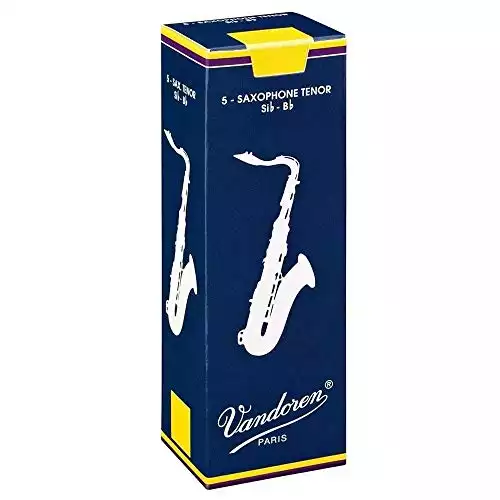
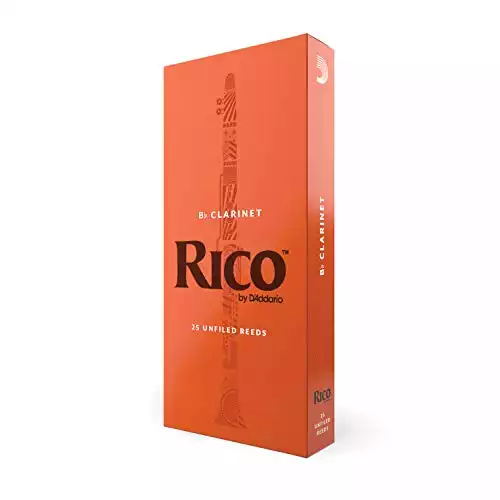


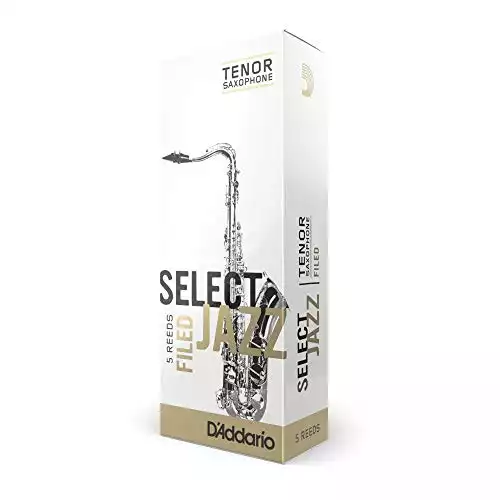

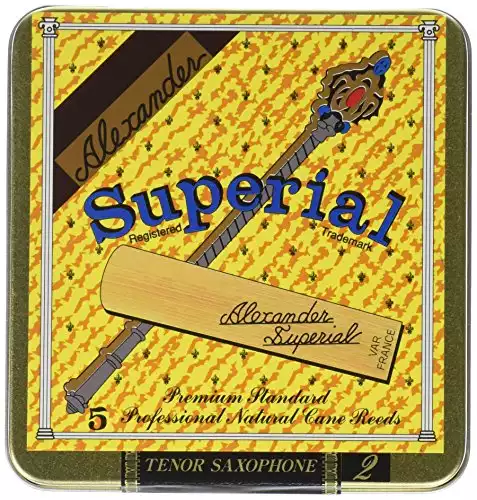

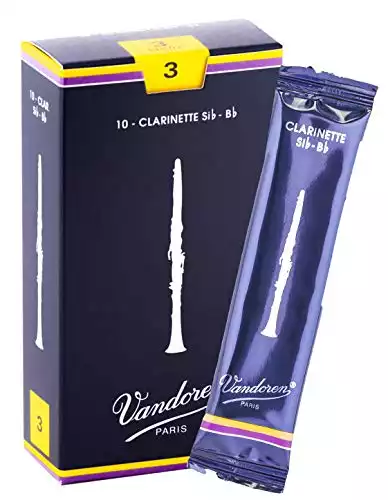





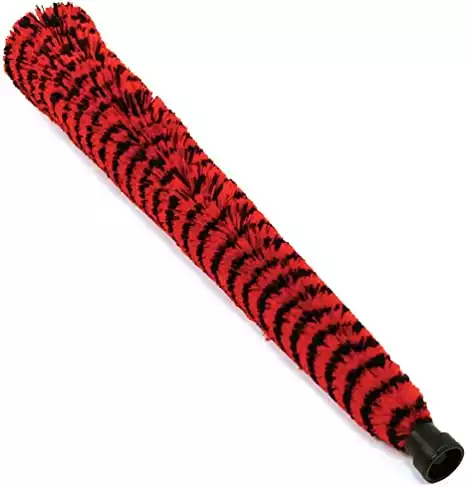



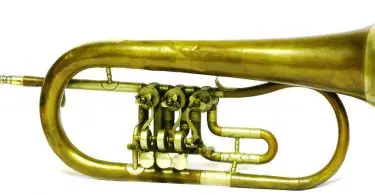

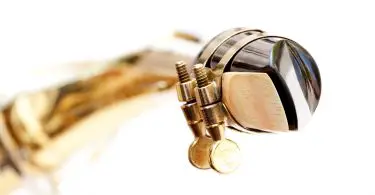
Start the discussion at talk.hearthemusicplay.com